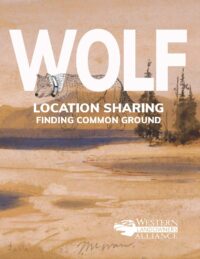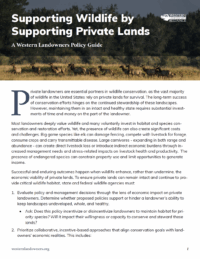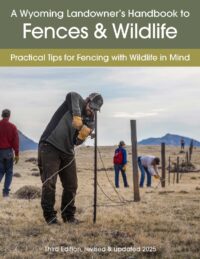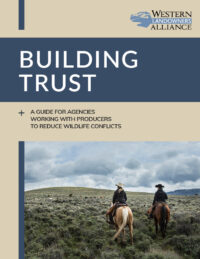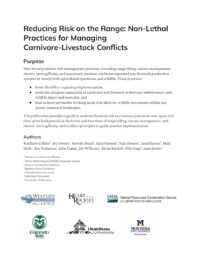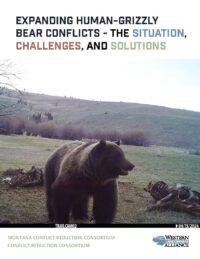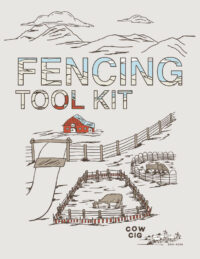Wildlife
| Arizona, California, Colorado, Idaho, Montana, New Mexico, Oregon, wolf reintroduction, Wolves, Wyoming
Wolf Location Sharing: Finding Common Ground
Wolf Location Sharing: Finding Common Ground tackles one of the biggest challenges in wolf conservation and livestock management across the American West: how to share wolf location information in ways…
| economics, Policy
Supporting Wildlife by Supporting Private Lands
A Western Landowners Policy Guide Don’t make land or conservation policy without consulting the flowchart in this document! Private landowners are essential partners in wildlife conservation, as the vast majority…
| Wyoming
A Wyoming Landowners Handbook to Fences and Wildlife, Third Edition (2025)
In this vital guide's third edition, revised and updated in 2025, and published by the Wyoming Game and Fish Department, building effective yet wildlife-friendly fencing is beautifully illustrated and clearly explained.
| conflict reduction, Policy, public lands, Working Wild Challenge
Building Trust
A guide for agencies working with producers to reduce wildlife conflicts Wildlife conflict on working lands can strain relationships between livestock producers and wildlife agencies, making trust crucial for conflict…
| agriculture, Big Game, Conservation, working lands, Wyoming
Wyoming-USDA Big Game Conservation Partnership Impact Report
A Partnership to Conserve Big Game Habitat in Wyoming. The roots of the Partnership were built from a Wyoming initiative that engaged stakeholders in conserving both wildlife migrations and the…
| conflict prevention, Working Wild Challenge
Reducing Risk on the Range: Non-lethal Practices for Managing Carnivore-Livestock Conflicts
Non-lethal predation risk management practices, including range riding, carcass management,electric fencing/fladry, and associated practices can be incorporated into livestock productionsystems to benefit both agricultural operations and wildlife. These practices: This…
| Idaho, Montana, Oregon, Washington, Wyoming
Expanding Human-Grizzly Bear Conflicts: The Situation, Challenges and Solutions
Grizzly bears are expanding their ranges into historic habitats outside of recovery zones, and much of the expansion is happening on private working lands and the urban wildland interface. Western…
| Arizona, Colorado, conflict reduction, Idaho, Montana, New Mexico, Oregon, range riding, Working Wild Challenge, Wyoming
Range Riding Producer Tool Kit
Range riding is a long-used and flexible practice, making it a beneficial conflict reduction tool for use in diverse, ever-changing western landscapes. The overarching goal of range riding for predator…
| conflict reduction, grizzly bears, Wolves, Working Wild Challenge
Electric Fencing Producer Tool Kit
Fencing, turbo fladry and electric drive over mats are tools that can be used to deter conflict through exclusion of large carnivores and/or containment of livestock. These temporary, semi-permanent or…
| conflict prevention, conflict reduction, grizzly bears, Wolves, Working Wild Challenge
Carcass Management Producer Tool Kit
Across the West, carcass management is increasingly recognized as an important part of systems-based livestock and predator conflict prevention efforts and for its role in increasing human safety on the…
Featured Publication
Stewardship with Vision: Caring for New Mexico’s Streams.
Private stewardship of Western land and water plays a vital role in the health of the West. This must-read guide highlights the importance of New Mexico landowners to our economic and environmental future. Our food, water resources, forests, rangelands, and fish and wildlife populations depend on their stewardship. Public policies that support and encourage the voluntary stewardship of our shared resources benefit us all.
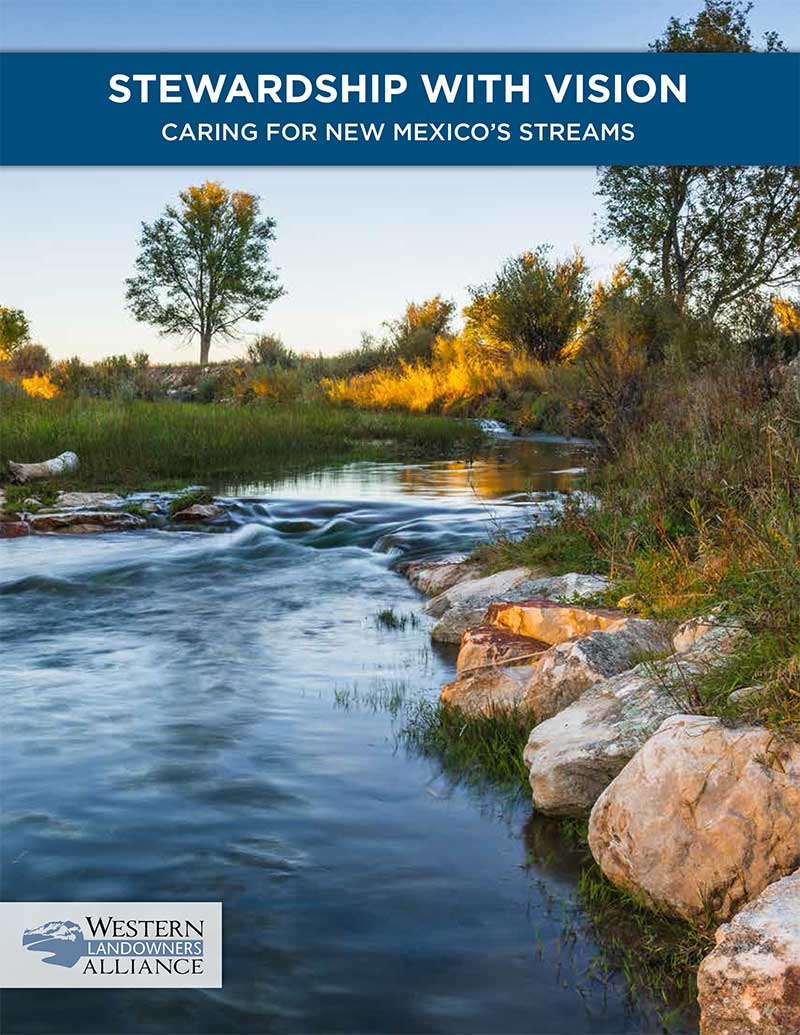
©2025 Western Landowners Alliance • PO BOX 27798, Denver, CO 80227 • 505.466.1495
Western Landowners Alliance is a 501 (c)(3) non-profit recognized by the IRS.
Tax ID: 46-1346488
